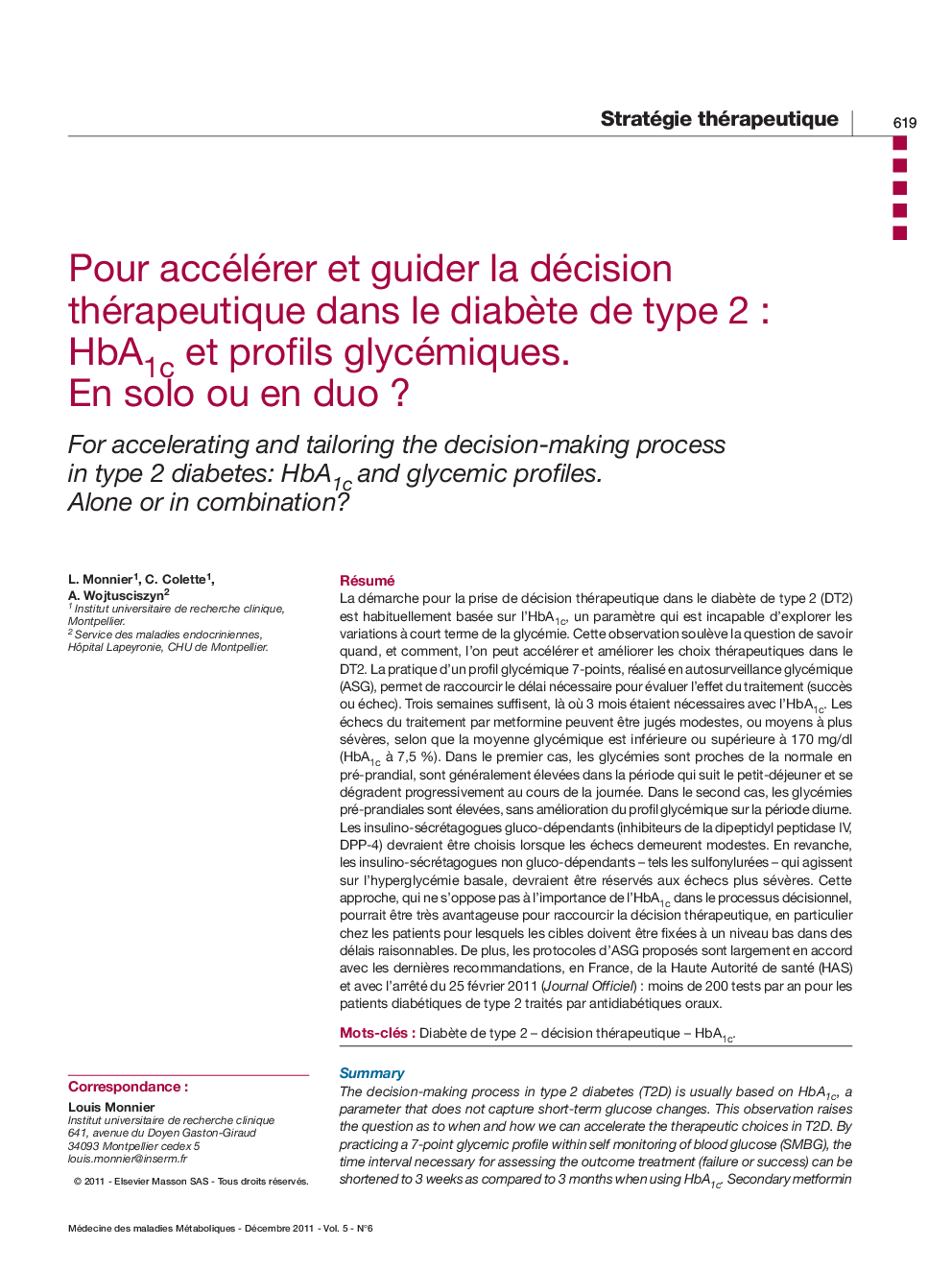| Article ID | Journal | Published Year | Pages | File Type |
|---|---|---|---|---|
| 3275384 | Médecine des Maladies Métaboliques | 2011 | 6 Pages |
Abstract
The decision-making process in type 2 diabetes (T2D) is usually based on HbA1c, a parameter that does not capture short-term glucose changes. This observation raises the question as to when and how we can accelerate the therapeutic choices in T2D. By practicing a 7-point glycemic profile within self monitoring of blood glucose (SMBG), the time interval necessary for assessing the outcome treatment (failure or success) can be shortened to 3 weeks as compared to 3 months when using HbA1c. Secondary metformin failure can be regarded as mild or more marked according to whether mean glucose is below or above 170 mg/dL (HbA1c at 7.5%). In the first situation, glucose values are near normal at premeal times, generally elevated during postbreakfast periods and progressively decreasing during the diurnal period. In the second situation, premeal values are markedly elevated with no improvement in glycemic profiles over daytime. Glucose-dependent insulinotropic agents aimed at reducing postprandial glucose excursions (DPP-4 inhibitors) are certainly more appropriate in mild failure. In contrast, non-glucose dependent insulin secretagogues such as sulfonylureas, which are registered as acting on basal hyperglycemia, should be reserved to more marked failures. This approach does not oppose the consensus that HbA1c is an important tool in the decision-making process and could be a real advantage for preventing undue management delays, especially in patients for whom lower targets should be achieved faster. In addition, the proposed SMBG is largely in agreement with the recent recommendations from the French Health Authority (HAS) and reimbursement conditions: less than 200 glucose testing per year for T2D patients treated with oral antidiabetic drugs.
Related Topics
Health Sciences
Medicine and Dentistry
Endocrinology, Diabetes and Metabolism
Authors
L. Monnier, C. Colette, A. Wojtusciszyn,
